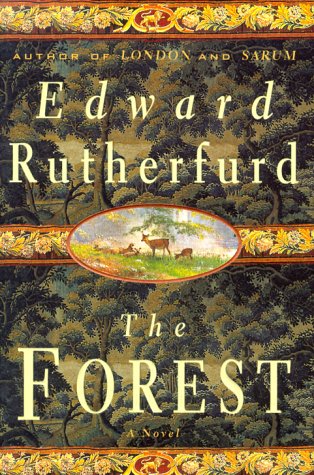The Forest
Edward Rutherfurd has given us the pageantry of Sarum, the teeming life of London and the vast exotic sweep of Russian history in Russka. In his latest novel he chooses a far quieter venue to show his readers how it has changed over the years – The New Forest. Unlike his other books that have been about places where dynamic things happen on a regular basis, the New Forest’s unique brand of magic is that it just is, a far more challenging thing to convey than exciting events.
The book opens in April 2000 as a film is about to be made and the descendant of many of the novel’s characters flies over the forest in a helicopter wondering about the past. The first point in history is 1099, where the stage is being set for Rufus’ assassination, arguably the most famous event in New Forest history. We meet the ancestors of all the people in the book but do not witness the actual event, which is a shame. Later we meet the staunchly Catholic Lady Albion who hopes the Armada will be victorious and conquer this country, restoring it to the true faith, and doomed Alice Lisle who lives through the Civil War, Cromwell’s Protectorate and the Monmouth Uprising. Surprisingly, we are then treated to the longest but most delightful tale, Albion Park, showing that Rutherfurd can pen a Regency romance that is like a book in itself. The 19th century sees the Forest being exploited by those ultra-consumers the Victorians as deer are killed and evergreen plantations replace the ancient trees, and the Forest’s people must act or lose their wonderful home.
Through the sweep of years we meet the aristocracy, those who make their living from the sea, the commoners who keep their animals in the forest and even who are so much a part of the place that they resemble it. Families fortunes rise and fall, they intermarry and find some surprising folk in their family trees or forget who their ancestors were entirely. My main complaint is that the stories, being longer than in other Rutherfurd volumes, lose some of their power to give us a window into history, as they are spun out longer than the material has made them. This is particularly true of the earlier stories, which tend to be rather forgettable. More could have been made of the innately mysterious quality the forest has, and how particularly in earlier times the old pagan religion lingered here and it was a place where anything could happen. Two books that convey this ambiance very well are Pamela Bennetts’ Death of the Red King and James Herbert’s The Magic Cottage. This book is nonetheless a fascinating and tireless glimpse into one of Britain’s most unique (and one of this reviewer’s favorite) places.










